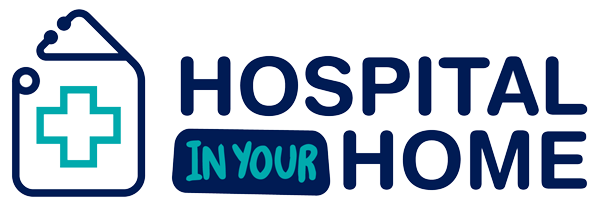Understanding CMS Waivers and Their Impact on Healthcare

CMS waivers have become a pivotal tool in enabling innovative models like the Hospital at Home (HaH) program.
These waivers are not just administrative adjustments; they are catalysts for improved patient outcomes, cost savings, and enhanced patient experiences.
This article dives deep into the world of CMS waivers, exploring their multifaceted impact on healthcare delivery, supported by insider insights and facts that highlight their transformative potential.
What Are CMS Waivers?
CMS waivers, known as Centers for Medicare & Medicaid Services waivers, provide flexibility in administering Medicare and Medicaid programs.
They allow states and healthcare providers to test new or existing ways to deliver and pay for healthcare services.
The primary purpose of these waivers is to improve care quality, enhance patient experience, and reduce healthcare costs by enabling innovative and customized healthcare solutions.
Types of CMS Waivers
There are several types of CMS waivers, each designed to address specific needs and objectives within the healthcare system:
- Section 1115 Waivers: These waivers give states the flexibility to implement experimental, pilot, or demonstration projects that promote the objectives of Medicaid. For instance, they can be used to expand Medicaid eligibility, provide services not typically covered, or implement innovative delivery systems.
- Section 1135 Waivers: Activated during emergencies, these waivers allow CMS to temporarily waive or modify certain Medicare, Medicaid, and Children’s Health Insurance Program (CHIP) requirements to ensure that sufficient health care items and services are available to meet the needs of enrollees.
- Home and Community-Based Services (HCBS) Waivers: These waivers allow states to provide long-term care services in home and community settings rather than institutional settings, promoting independence and quality of life for individuals with disabilities and the elderly.
The concept of CMS waivers dates back to the early 1980s when Section 1115 waivers were introduced to foster state-level innovation in Medicaid programs.
Over the decades, these waivers have evolved to address a broader range of healthcare needs, particularly as the healthcare landscape has shifted towards more patient-centered and value-based care models.
The Role of CMS Waivers in Supporting the Hospital at Home (HaH) Model
The Hospital at Home (HaH) model is an innovative healthcare delivery approach that provides hospital-level care to patients in the comfort of their homes.
This model is designed to improve patient outcomes, reduce healthcare costs, and enhance patient experience.
By leveraging advanced technology and coordinated care, HaH programs ensure patients receive high-quality, personalized care outside traditional hospital settings.
CMS Waivers and HaH
CMS waivers are instrumental in successfully implementing and scaling the HaH model. These waivers provide regulatory flexibility for hospitals and healthcare providers to deliver acute care services at home.
For instance, they allow for modifications in reimbursement structures, enabling providers to receive payments for home-based hospital care services that typically require inpatient settings.
Improving Patient Outcomes through CMS Waivers
CMS waivers contribute significantly to enhancing care quality by fostering innovative care delivery models like HaH.
Patients receiving hospital-level care at home often experience better health outcomes due to the familiar and comfortable environment, reduced exposure to hospital-acquired infections, and more personalized care.
One notable case is Mount Sinai Health System’s HaH program, which demonstrated a 19% reduction in readmission rates and a 32% decrease in the average length of stay compared to traditional inpatient care.
These improvements are largely attributed to the flexibility provided by CMS waivers, allowing the program to effectively tailor care plans to individual patient needs.
Cost Savings Achieved through CMS Waivers in HaH Models
The financial implications of CMS waivers in HaH models are profound. Significant cost savings are realized for hospitals, healthcare systems, and taxpayers by shifting care from expensive hospital settings to patients’ homes.
These savings come from reduced hospital admissions, shorter lengths of stay, and lower overhead costs.
A study by the Commonwealth Fund found that widespread adoption of HaH programs, supported by CMS waivers, could save Medicare up to $17 billion annually.
These savings not only benefit the healthcare system but also free up resources for other critical healthcare needs, thus enhancing the overall sustainability of the healthcare system.
Enhancing Patient Experience with CMS Waivers
CMS waivers enable a more patient-centered approach to care by allowing healthcare providers to customize care delivery based on individual patient preferences and needs.
In HaH programs, patients receive comprehensive medical care at home, surrounded by their loved ones, significantly enhancing their overall care experience.
One of the key benefits of the HaH model, supported by CMS waivers, is the active involvement of family members in the care process.
This involvement supports patients emotionally, improves adherence to care plans, and fosters a collaborative care environment.
Community Health Improvement via CMS Waivers and HaH Models
CMS waivers and HaH programs collectively contribute to improved community health outcomes.
By reducing hospital congestion and ensuring that patients receive timely and appropriate care at home, these models help alleviate the burden on emergency rooms and hospital wards, thus enhancing overall public health resilience.
In the long term, integrating HaH models supported by CMS waivers can lead to healthier communities.
The emphasis on preventive care and early intervention helps manage chronic conditions more effectively, reducing the need for emergency care and hospital readmissions.
Proven Success of CMS Waivers in International HaH Programs
The success of CMS-like waivers in international settings offers valuable insights. The Hospital in Your Home program has achieved remarkable success in Australia, boasting a high net promoter score of 97.
This program, supported by regulatory flexibility similar to CMS waivers, has significantly improved patient satisfaction and healthcare outcomes.
Key lessons from international HaH programs include the importance of robust infrastructure, comprehensive care coordination, and continuous monitoring and evaluation.
These elements are crucial for the success of HaH models and can be effectively implemented in the U.S. healthcare system with the support of CMS waivers.
Boosting Healthcare Capacity with CMS Waivers in HaH Programs
The U.S. healthcare system often faces capacity challenges, particularly during public health emergencies.
CMS waivers are crucial in addressing these challenges by enabling alternative care models that reduce the strain on hospital resources.
By allowing home-based hospital care, CMS waivers help optimize healthcare capacity and ensure that hospital resources are reserved for the most critical cases.
This flexibility is particularly valuable during times of increased demand, such as the COVID-19 pandemic.
Legislative Support for CMS Waivers in Advancing the HaH Model
Legislative support is vital for the continued success of CMS waivers and HaH models.
For example, the Hospital Inpatient Services Modernization Act of 2024 aims to ensure the sustainability and expansion of HaH programs by providing the necessary regulatory and financial backing.
Healthcare providers, policymakers, and stakeholders must advocate for policies that support the expansion of CMS waivers.
This advocacy is essential for ensuring innovative care models like HaH can continue to thrive and deliver high-quality, cost-effective care to patients.
Innovative, Value-Based Care Enabled by CMS Waivers
The shift towards value-based care is a significant trend in healthcare, and CMS waivers are a critical enabler of this transition.
By allowing for flexible and innovative care delivery models, CMS waivers help align healthcare services with value-based care principles, focusing on outcomes and patient satisfaction.
Examples of innovative practices facilitated by CMS waivers include telehealth, remote monitoring, and integrated care teams in HaH programs.
These practices enhance care coordination, improve patient outcomes, and reduce healthcare costs.
Addressing Challenges and Opportunities with CMS Waivers in HaH Implementation
Common Challenges
Despite the numerous benefits, implementing CMS waivers and HaH models has challenges.
These include regulatory complexities, variability in state policies, and the need for robust infrastructure and technology.
Opportunities for Improvement
Opportunities for enhancing the effectiveness of CMS waivers include streamlining the waiver application process, increasing funding for innovative care models, and fostering collaboration between federal and state agencies.
The potential of CMS waivers to transform healthcare delivery can be fully realized by addressing these challenges.
Conclusion
CMS waivers are indispensable tools that support innovative healthcare models like the Hospital at Home (HaH) program.
By providing regulatory flexibility, these waivers enable improved patient outcomes, significant cost savings, and enhanced patient experiences.
The success of CMS waivers in international settings and their potential to boost healthcare capacity further underscore their importance.
To ensure the continued success and expansion of CMS waivers, stakeholders must support legislative measures and advocate for policies that promote innovative care models
By doing so, we can create a more sustainable, efficient, and patient-centered healthcare system that meets the evolving needs of our communities.
If you have questions or want to advocate for CMS waivers, please contact Hospital In Your Home US or call 1-844-690-4491.
Together, we can support innovative healthcare solutions that improve lives and communities.
FAQs
What are CMS Waivers?
CMS Waivers are special permissions granted by the Centers for Medicare & Medicaid Services (CMS) that allow states or healthcare providers to deviate from certain federal health program requirements. These waivers are intended to facilitate innovative practices that improve patient care, increase efficiency, or reduce costs without compromising service quality or access.
How do CMS Waivers impact patient care?
CMS Waivers can significantly impact patient care by allowing for more tailored healthcare solutions that meet local needs. For example, waivers may enable states to expand Medicaid eligibility, test new ways of delivering care, or provide services that are not typically covered, thereby potentially improving outcomes and patient satisfaction.
Who can apply for a CMS Waiver, and what is the process?
States, healthcare providers, and sometimes consortia of healthcare entities can apply for CMS Waivers. The application process involves submitting a detailed proposal to CMS that outlines how the waiver will be used to achieve specific healthcare objectives, followed by a period of public comment and review by CMS before approval can be granted.
What types of CMS Waivers are there?
There are several types of CMS Waivers, including Section 1115 waivers for Medicaid experimental, pilot, or demonstration projects, Section 1135 waivers for temporary relief from certain statutory requirements during emergencies, and State Innovation Waivers under Section 1332, which allow states to modify parts of the Affordable Care Act to better suit local needs.
Can CMS Waivers affect healthcare costs and how?
Yes, CMS Waivers can affect healthcare costs by enabling states and providers to implement cost-saving measures that are not otherwise permissible under standard regulations. These waivers can lead to more efficient resource use, such as reducing unnecessary hospitalizations or shifting to community-based care settings, potentially lowering costs while maintaining or improving care quality.
